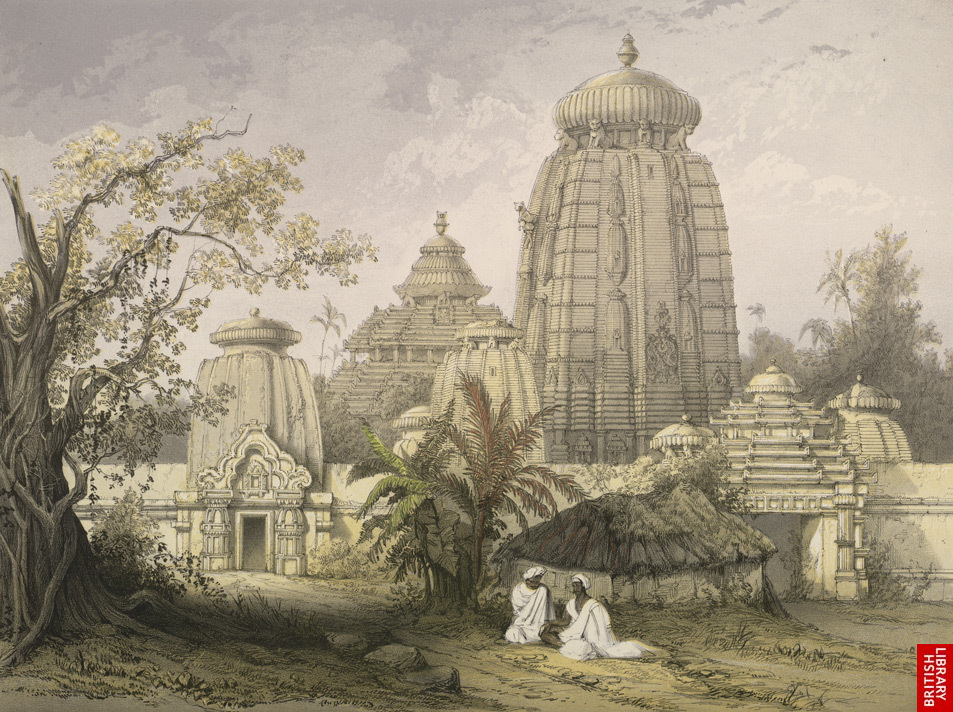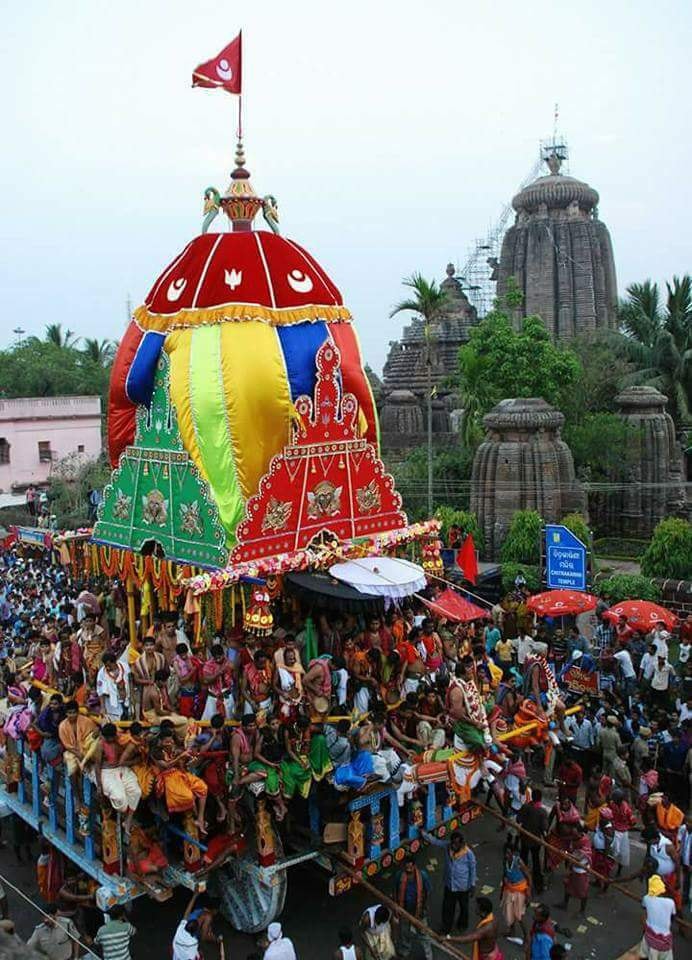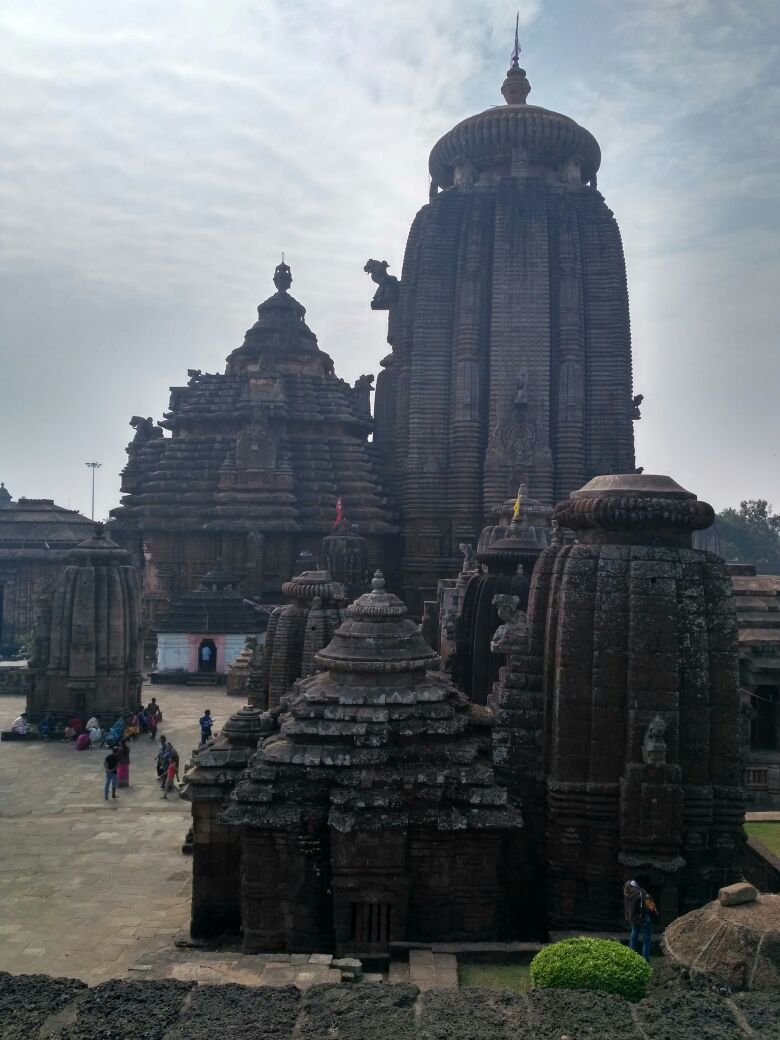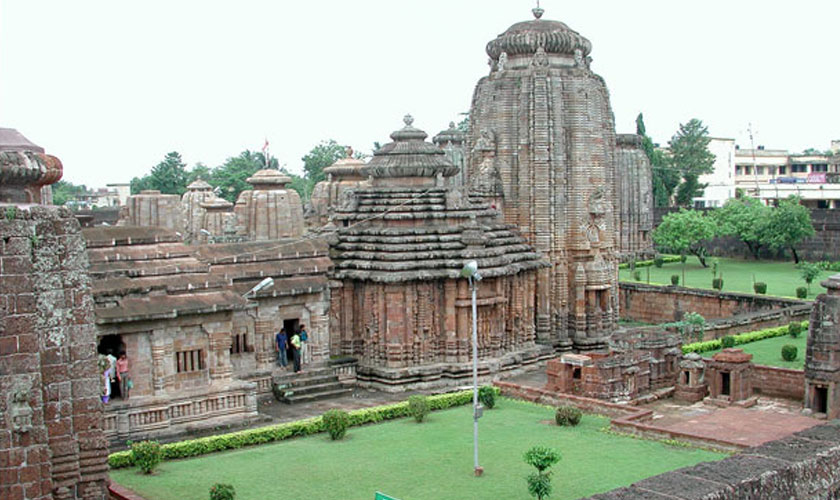By Asutosh Mohanty

The sacred ritual ‘Śiva Śayana Ćaturdaśi Yātrā’, observed on śukla pakśa ćaturdaśi of the month of Aṣāḍha (June-July), at the Liṇgarāja Temple Bhubaneswar, falls today according to the Oḍia calendar.
Bhubaneswar, the capital city of Odisha, is known as the city of temples. Bhubaneswar derived its name from the city’s presiding deity, Bhagawān Śiva, locally known as ‘Tribhuvanēśvara’, which means ‘the Lord of the Three Worlds’. In popular terms, Bhagawān Śiva is referred to as ‘Bhubanēśvara’, and after him the city is known as ‘Bhubaneswar’. Tribhuvanēśvara is also known as ‘Liṇgarāja’. Liṇgarāja means ‘the King of liṇgams or liṇgas’. Bhubaneswar is also referred to as ‘Ekāmra Kśetra’ (as per ‘Ekāmra Purāña’ and other scriptures), as Liṇgarāja Mahāprabhu is said to have originated under a Mango tree called ‘ekāmra’ (the word for mango in Sanskrit is āmra). Liṇgarāja Mahāprabhu is also described as ‘Swayambhū Liṇga’ (i.e. self-originated). This temple is dedicated to Harī-Hara (Harī: Viṣñu & Hara: Śiva) a form in which Bhagawān Viṣñu and Bhagawān Śiva amalgamate.

Several festivals to mark the rituals associated with Liṇgarāja Mahāprabhu are held throughout the year. One of them is the yātrā or ‘travel’ of Liṇgarāja Mahāprabhu. The nibaṇdhakāras (compilers of Purāñas) of Odisha have mentioned 14 festivals or ‘Ćaturdaśa Yātrās’. The ‘Kālasāra’ (a Tāṇtrika treatise) of Gadadhara Rajaguru speaks of the major 14 festivals with their timings and due rituals. The ‘Sthala Mahātmyams’ (texts that narrate the spiritual significance of a pilgrimage spot) such as the Ekāmra Purāña, Ekāmra Ćaṇdrikā and Svarñādri Mahōdaya, provide details about the rituals of these festivals. Śiva Śayana Ćaturdaśi, or the Śayana Yātrā, is one of those Ćaturdaśa yātrās like Mahā Śivarātri, Rukuna Ratha Yātrā and Ćaṇdana Yātrā. The festival has unique significance in Ekāmra Kśetra of Odisha, especially for Bhubaneswar.

Celebrated on śukla pakśa ćaturdaśi of the month of Aṣāḍha, it marks the day Liṇgarāja Mahāprabhu is retired to sleep on the fourteenth day of bright fortnight of Aṣāḍha, and hence the name of the festival ‘Śayana Ćaturdashi’. From this day Bhagawān Liṇgarāja Mahāprabhu is said to go into deep sleep for 4 months. As per scriptures, when the Sun moves into Mithuna rāśi (Gemini) the ‘Śayana Yātrā’ of Liṇgarāja Mahāprabhu is observed, and similarly when the Sun moves into Tula Rāśi (Libra) the ‘Uthāpana Yātrā’ (i.e. waking up of Liṇgarāja Mahāprabhu) is observed.
Before Śayana Yātrā of Liṇgarāja Mahāprabhu other dēvatās (divinities) like Viṣñu, Agni, Kartikēya, Iṇdra, Gañēśha, Yama (Dharmarāj), Bhāskara (Sūrya), Vāyu, Pṛthvi, Varuña, Brahmā and others go to sleep in their respective nakśatras (lunar mansion) and tithis (lunar day). All these dēvatās change their side of sleeping on their ‘Pārśwa Paribartana Yātrā’ day and wake up on ‘Uṭhāpana Yātrā’ day, respectively, based on nakśatras and tithis.
Vidhis

As per Ekāmra Ćaṇdrika, in the evening hours of Śukla Pakśa ćaturdaśi, a golden coloured ćalaṇti pratimā (in Oḍia folklore a living God/Goddess) of Devi Mā Pārvati and a Silver Coloured ćalaṇti pratimā of Tribhuvaneśvara (vigraha or idol of Liṇgarāja Mahāprabhu) especially sculpted for this festival are dressed up magnificently with clothes and ornaments. This is followed by a special pūja (worship) of Devi Mā Pārvati and Tribhuvaneśvara by chanting of various maṇtras by Badu Sēvakas (dedicated servitors at the shrine).
Following this, the ćalaṇti pratimās of Devi Mā Pārvati and Tribhuvaneśvara are placed on a well-decorated pālaṇka (bed or couch) in recumbent position and then the doors are closed.
Since the advent of the worship of Harī-Hara form in Ekāmra Kśetra, all the aforementioned rituals are performed for golden coloured ćalaṇti pratimā (vigraha with Dēvī Mā Pārvati on one side and Dēvī Mā Lakśmi on other side) and silver coloured ćalaṇti pratimā (vigraha with Tribhuvaneśvara on one side and Viṣñu on the other side).

On Uthāpana Ćaturdaśi, Dēvī Mā Pāravati and Tribhuvaneśvara are roused from the bed. Uthāpana Yātrā is observed on śukla pakśa ćaturdaśi of the month of Kartika Oḍia Month.
During this period of 4 months, Bhagawān Parśurāma is said to be the protector of Ekāmra Kśetra. On the auspicious occasion of Parśurāmāśtami (śukla pakśa aśtami of Aṣāḍha Month), ćalaṇti pratimā of Liṇgarāja Mahāprabhu is taken to Parśurāmēśvara Maṇdira by which it is said that He allocates the duty of protecting Ekāmra Kśetra to Bhagawān Parśurāma for these 4 months.
In other Śiva Maṇdiras in Odisha ‘Pārśwa Paribartana Yātrā’ is observed. On this day, ćalaṇti pratimās are turned over on the side to change their side of sleeping. ‘Pārśwa Paribartana Yātrā’ is observed on śukla pakśa ćaturdaśi of Bhādra (Bhādrapada) month of Oḍia calendar. In Liṇgaraja Temple, this vidhi is not observed.
It is believed that bhaktas (devotees) who get darshana (view of the Deity) of Liṇgarāja Mahāprabhu on Śayana and Uthāpana Yātrās earn a lot of puñya (spiritual merit that is said to offset accumulated karma over several incarnations).
References/Sources:
- Ekamra Purana, 69.28-30; Ekamra Chandrika, 11.142-159; Kapila Samhita, 19.26-27 (Parsumramastami)
- Ekamra Purana, 69.31-42; Ekamra Chandrika, 12.1-20 (Śiva Shayana Chaturdashi)
- Ekamra Purana, 69.79-82; Ekamra Chandrika, 12.73-85 (Uṭhāpana Chaturdashi)
- U. N. Dhal ,”A Note on the Sacred Rituals at Ekāmra Kśetra (Bhubaneswar)”
- Sri Lingaraja & Badu Niyoga, Chitrasen Batu (Odia Book)
- Sei Samaya Eei Sahara Bhubaneswar, Suresh Balabantaray (Odia Book)
- Kalasara of Gadadhara Rajaguru
- K. S. Behera, “The Lingaraja Temple of Bhubaneswar – Art and Cultural Legacy”

Author: After a successful stint with PT Education & Hewlett Packard Enterprise into Technology Consulting, Asutosh Mohanty has been working with Gaurav Pradhan Foundation (GPF) which is a non-profit organisation working towards strengthening the social and economic fabric of India.
Acknowledgement: I am really thankful to Kar Nana (Sanskrit scholar and Pūjāri) for his knowledge on our scriptures and also for guiding me. I am also thankful to my parents for their valuable help in translating regional texts.
